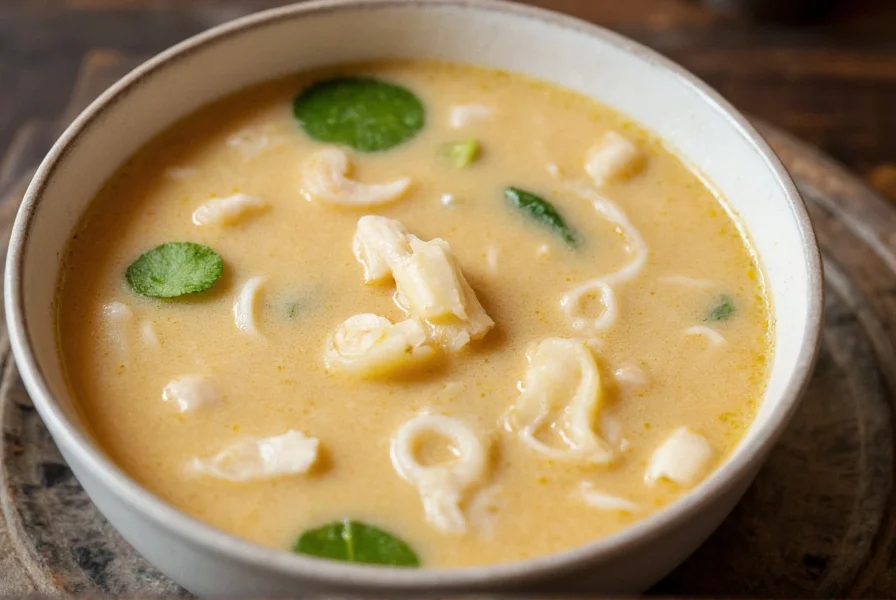Native to Indonesia and widely cultivated across Southeast Asia, galangal (Alpinia galanga) has been an essential culinary and medicinal ingredient for centuries. Unlike its more common cousin ginger, galangal offers a sharper, more complex flavor profile that's indispensable in authentic Thai, Indonesian, and Malaysian dishes. This hardy perennial plant grows up to six feet tall with long, lance-shaped leaves and striking red flowers, but it's the underground rhizome that chefs and herbalists prize most.

Understanding Galangal: Types and Characteristics
Two primary varieties dominate culinary applications:
| Type | Appearance | Flavor Profile | Common Uses |
|---|---|---|---|
| Greater Galangal | Longer, cylindrical shape with smoother brown skin | Stronger, more peppery with citrus undertones | Thai tom kha gai, Indonesian rendang |
| Lesser Galangal | Smaller, rounder with tighter rings and reddish hue | Milder, more floral and earthy | Traditional medicine, some Vietnamese dishes |
Galangal vs Ginger: Key Differences
While both belong to the same botanical family, understanding what is galangal requires distinguishing it from ginger, which many confuse it with. Galangal's flesh ranges from creamy white to pale yellow with a harder, denser texture than ginger's fibrous structure. The flavor comparison reveals galangal's unique profile: less sweet and fiery than ginger, with pronounced lemon-grass and pine notes rather than ginger's warm spiciness.
Chefs seeking authentic Southeast Asian flavors should note that substituting ginger for galangal significantly alters dish profiles. When exploring what galangal root contributes to recipes, consider its role as a foundational flavor rather than a background note—its distinctive taste remains prominent even after cooking, unlike ginger which mellows considerably.
Culinary Applications of Galangal
Understanding how to use galangal in cooking begins with proper preparation. Unlike ginger, galangal's tough fibers require either very fine slicing or grating. In traditional Thai cuisine, fresh galangal appears in nearly all curry pastes and is essential for authentic tom kha gai (coconut soup). Indonesian cooks incorporate it into spice bases for rendang and sambals, while Malaysian chefs use it in laksa broths.
For home cooks wondering where to buy galangal, check Asian grocery stores (particularly Thai or Indonesian markets), specialty food sections in larger supermarkets, or online retailers that ship fresh produce. When selecting galangal, look for firm, smooth rhizomes without soft spots or wrinkles—similar to choosing fresh ginger but with a more pronounced citrus aroma when scratched.
Nutritional Profile and Potential Health Benefits
Research into galangal health benefits reveals promising properties. This rhizome contains galangin, a flavonoid with antioxidant and anti-inflammatory effects studied for potential digestive and immune support. Traditional medicine systems have used galangal for centuries to address nausea, respiratory issues, and digestive discomfort.
A 100g serving of fresh galangal provides approximately:
- 80 calories
- 18g carbohydrates
- 2g dietary fiber
- Significant vitamin C and magnesium
- Trace amounts of iron and potassium
While not a nutritional powerhouse like some superfoods, galangal's value lies in its bioactive compounds rather than macronutrient density. Ongoing research continues to investigate its potential antimicrobial and anti-nausea properties, though more clinical studies are needed to confirm many traditional medicinal claims.
Storage and Substitution Guidance
Proper storage extends galangal's shelf life significantly. When stored in a paper bag in the refrigerator's crisper drawer, fresh galangal remains usable for 2-3 weeks. For longer preservation, freeze whole or sliced pieces for up to six months—frozen galangal actually becomes easier to grate when partially thawed.
When fresh galangal isn't available, understanding fresh galangal substitute options becomes crucial. The closest approximation combines equal parts fresh ginger with a squeeze of lime juice and a pinch of black pepper, though this only approximates galangal's complexity. Dried galangal powder works in some applications but lacks the bright top notes of fresh rhizome. Many Thai chefs consider galangal irreplaceable in authentic recipes, particularly for dishes where it serves as a primary flavor rather than supporting note.
Cultural Significance Across Southeast Asia
Galangal's importance extends beyond mere flavoring—it holds cultural significance across its native regions. In traditional Javanese ceremonies, galangal appears in ritual offerings, while Thai herbal medicine incorporates it into formulations for digestive wellness. The plant's resilience and distinctive aroma have earned it symbolic value representing protection and vitality in various cultural contexts.
Historical records show galangal traveling along ancient spice routes, reaching as far as medieval Europe where apothecaries valued it for medicinal preparations. Though less prominent in Western cuisine today, its role in authentic Southeast Asian cooking remains indispensable, with chefs considering it as fundamental as garlic or onions in their culinary traditions.

Practical Tips for Cooking with Galangal
Mastering how to use galangal in cooking requires technique. Always peel the tough outer skin with a spoon (like ginger) before use. For soups and stews, add whole slices early in cooking to infuse flavor, then remove before serving as the texture remains too fibrous to eat. In curry pastes, grate or finely mince the rhizome for maximum flavor extraction.
When experimenting with Thai galangal recipes, remember that less is often more—its potent flavor can dominate if overused. Start with one-inch piece per four servings in soups, adjusting to taste in subsequent preparations. For beginners, pairing galangal with familiar ingredients like coconut milk creates approachable entry points to its distinctive flavor profile.











 浙公网安备
33010002000092号
浙公网安备
33010002000092号 浙B2-20120091-4
浙B2-20120091-4